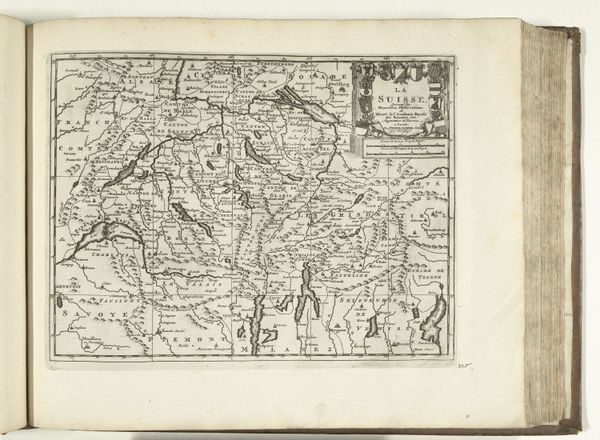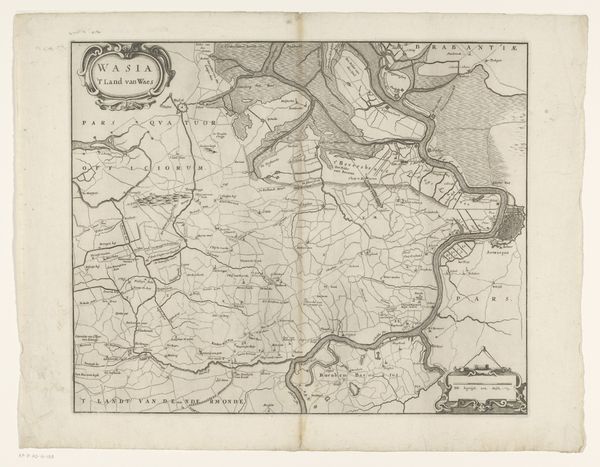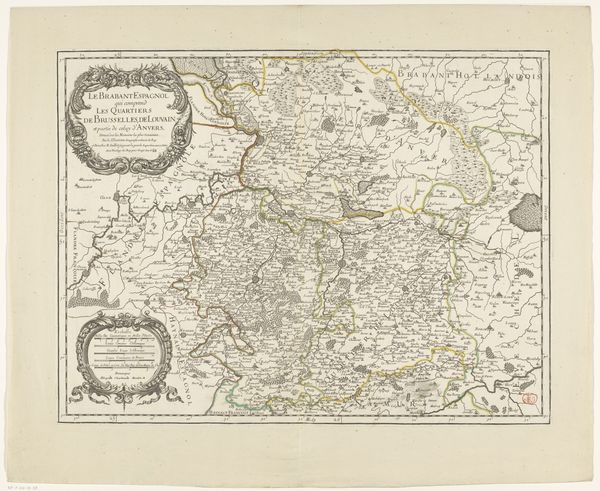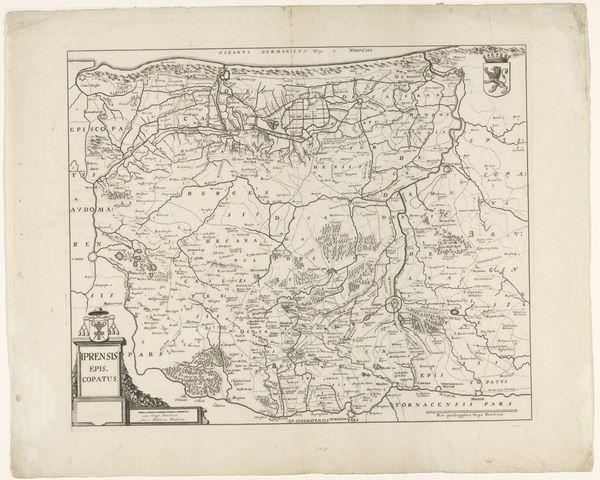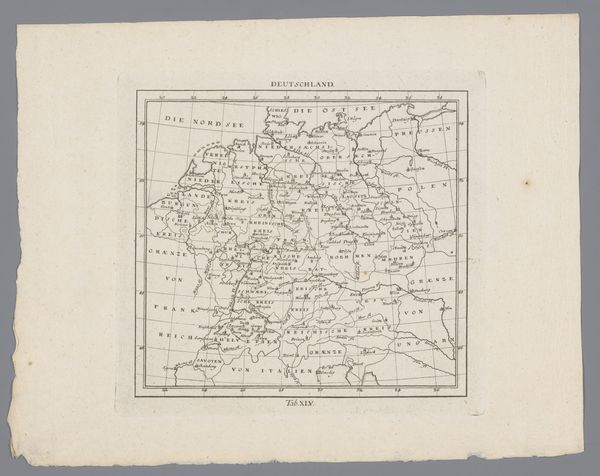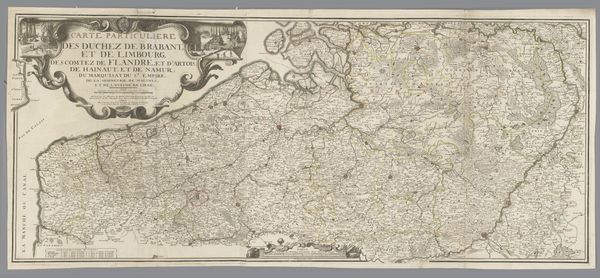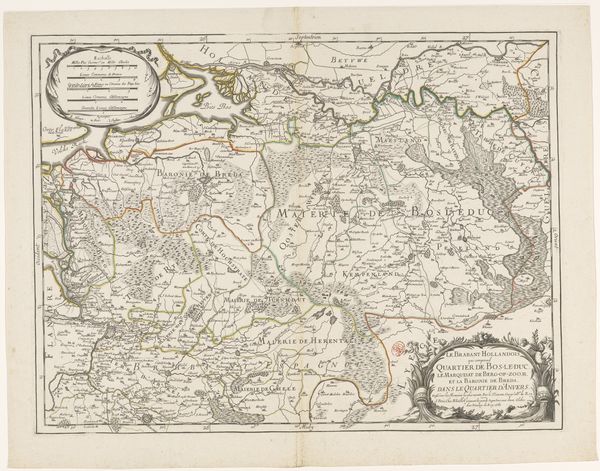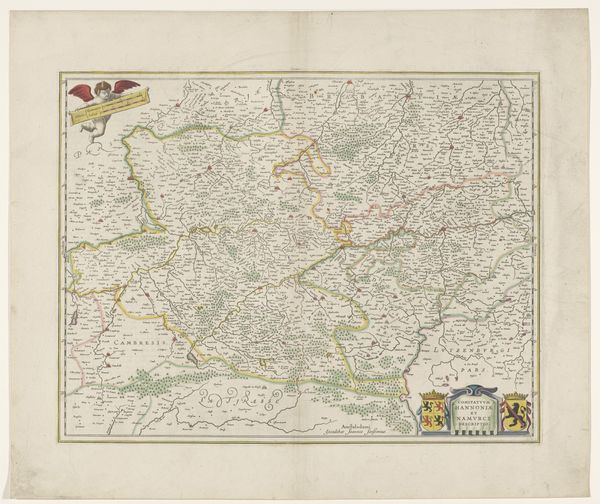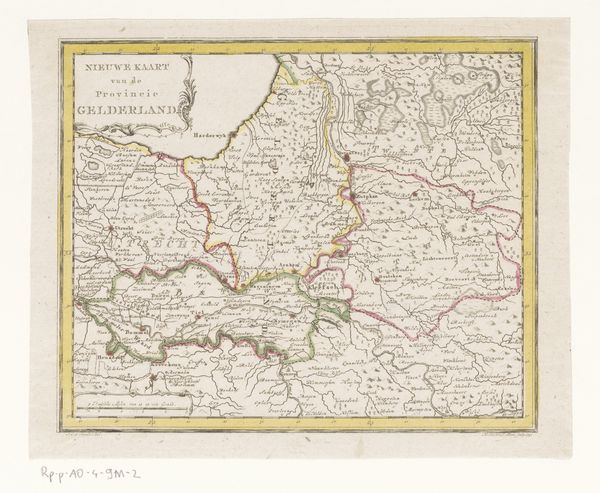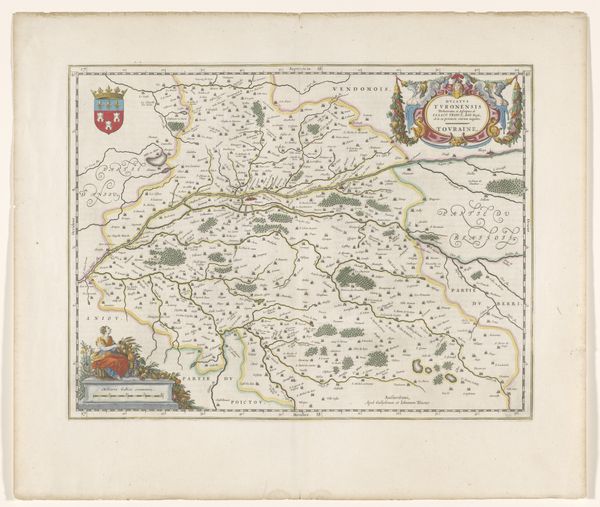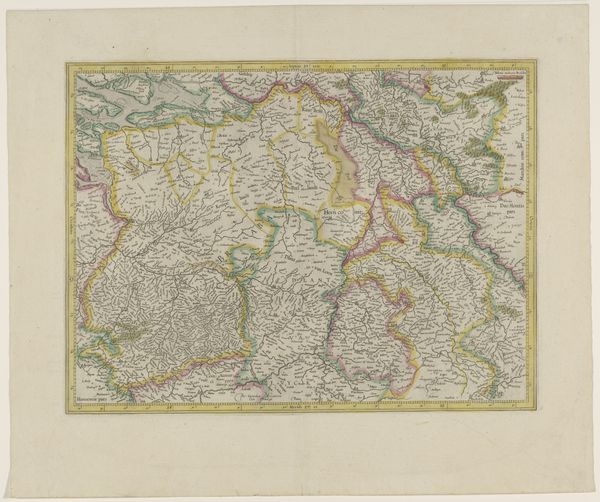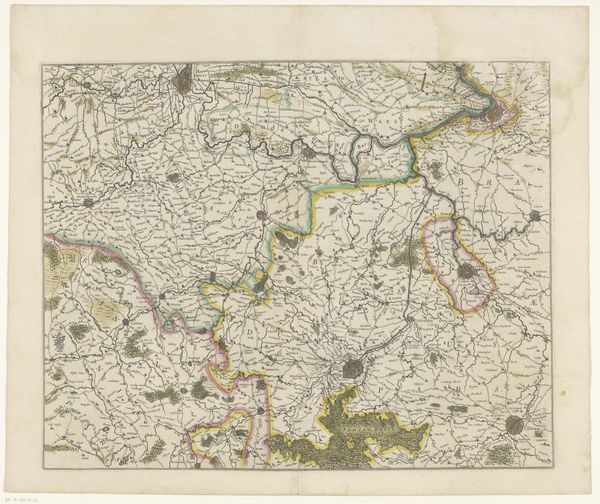
drawing, graphic-art, print, etching, paper, engraving
#
drawing
#
graphic-art
#
baroque
# print
#
etching
#
landscape
#
etching
#
paper
#
geometric
#
line
#
engraving
Dimensions: height 164 mm, width 231 mm
Copyright: Rijks Museum: Open Domain
Curator: Before us is a map, etched and engraved onto paper, known as "Kaart van het hertogdom Luxemburg," dating roughly from 1635 to 1696. Editor: It’s so intricate. Almost oppressive, like a web tightening around the land. You feel the weight of borders and dominion pressed into every line. Curator: The meticulous detail certainly speaks to a very specific kind of control, and baroque sensibility. These maps, as symbolic objects, helped define territories and power structures during a period of intense political maneuvering. Note how the very act of mapping asserts a kind of possession. Editor: Precisely. It is about visibility, right? And the very act of declaring territory implies boundaries, inclusion, exclusion. Look at how this anonymous cartographer demarcates "Partie de la France," and then claims "Le Duche de Lvtzenbovrg"—carving it all out on paper, so clearly delineating power. How can the symbols displayed speak to what or whom the mapmaker considered important at the time of the work? Curator: The lines indicating borders become bold statements but in visual form, separating regions that were deeply interconnected, as it attempts to make tangible something more intangible. This representation reinforces very artificial divides. What do you feel looking at those lines? Editor: I think about contested histories, land struggles, and the ongoing debates about nationhood and identity, where historical depictions have present day reverberations. How were indigenous communities included or more likely excluded from such portrayals? What assumptions are encoded in its creation and reception? It makes me reflect on who decides whose story is told, and how. Curator: And so, even in something that seems as straightforward as a geographical survey, we find layers of cultural and political significance embedded within the visual language. Perhaps the act of drawing the map reveals as much, if not more, than the map itself! Editor: Absolutely. It’s a stark reminder of how much maps have shaped our understanding, and misunderstanding, of the world we inhabit, still shaping lives today.
Comments
No comments
Be the first to comment and join the conversation on the ultimate creative platform.
